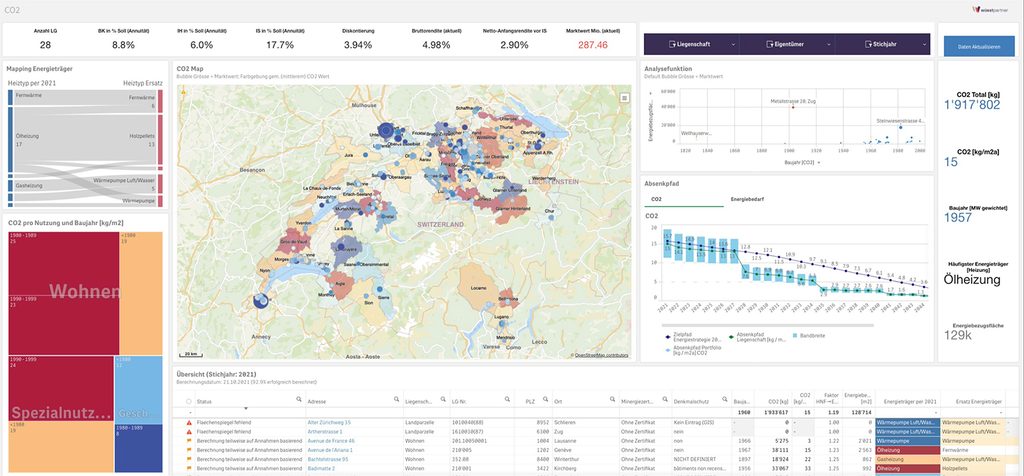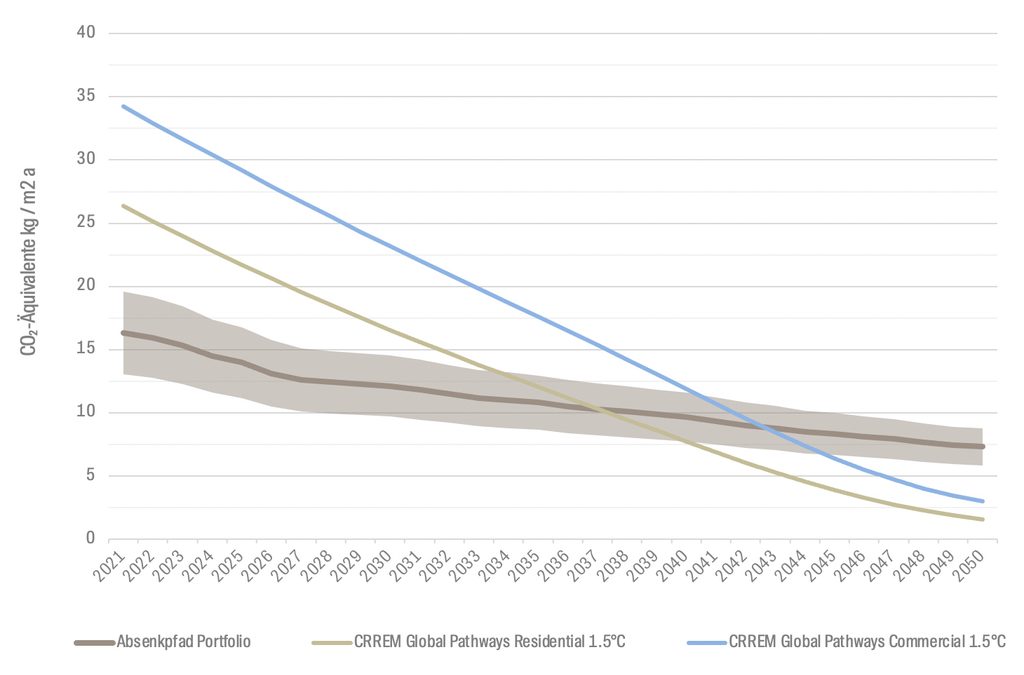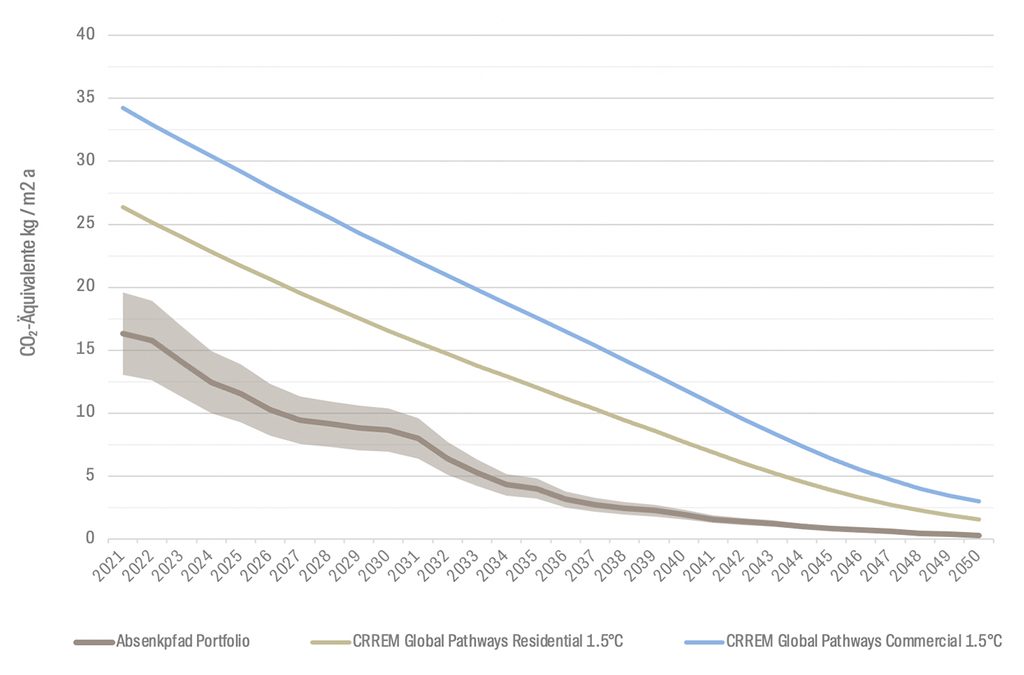Evaluate the CO2 emissions of your properties and implement targeted measures
November 21, 2021

- Estimate the investments needed to achieve climate targets
- How do CO2 reduction measures affect property market value?
- Climate neutrality in Europe and Switzerland by 2050
- How is a CO2 reduction path calculated?
- Digital intelligence and subject matter expertise
The topic of climate change has brought about intense political and social pressure. A large proportion of CO2 emissions is produced by buildings, predominantly as a result of being heated by fossil fuels such as gas or oil. Furthermore, many buildings are not sufficiently insulated, resulting in heat loss. For certain buildings, energy-efficient renovations are not easy to implement, whether that be for structural reasons or because the buildings are listed.
But how can you determine how the CO2 balance of your properties can be improved? What additional investments do you have to account for to achieve climate targets and how do these measures impact your properties’ market value?

Climate neutrality in Europe by 2050
The EU and Switzerland aim to become climate neutral by 2050. The new EU Climate Law has transformed this political promise into an obligation, providing citizens and businesses with the legal certainty and predictability needed to make the transition to climate neutrality. From 2050, the EU aims to achieve negative emissions.
In the course of the second climate compatibility test in 2020, Wüest Partner was commissioned by the Federal Office for the Environment (FOEN) to develop a model with which Swiss real estate and mortgage portfolios could be analyzed for their climate compatibility. The challenge: being able to make statements about the CO2 emissions of buildings, based on a small amount of specifically selected data. (Read more about PACTA – Climate-compatible real estate investments)
How is a CO2 reduction path calculated?
With Wüest Climate, Wüest Partner has developed a model that helps real estate owners to calculate the CO2 emissions of their properties and visualize their CO2 reduction roadmap. The model is based, among other things, on European standards and has been calibrated against 50,000 energy performance certification data sets. It also offers detailed analyses of real estate portfolios and targeted recommendations for action. From this, specific action measures can be derived, creating a clear action plan for how CO2 emissions can be significantly reduced.


To create this detailed analysis, the model requires the following parameters about the property:
- Geo-coordinates or address of the property
- Year of construction of the property
- Utilization schedule with floor space details and the energy reference area, if available
- Number of heated floors
- Energy sources of heat generation
- Electricity products
- Year of any energy renovations of the following components:
- Heat generation
- External walls
- Windows
- Roof
- Basement ceiling
Property owners usually provide this existing data, which Wüest Partner uses to create a detailed report. If more detailed information about the building is available, for example from an energy performance certificate, then these key figures can be integrated into the model.
Digital intelligence and subject matter expertise
Wüest Climate can calculate a reliable value with just a few data sets, as the model derives important key figures based on values entered via benchmarks. This interdisciplinary approach not only calculates CO2 emissions, but also the profitability of potential investments.
The detailed reports produced by Wüest Climate include investment planning recommendations and a CO2 emissions reduction path, which is derived from suitable measures such as renovation strategies. This allows forecasts to be made and enables property owners to understand how the respective investments and renovations will affect the overall CO2 balance and economic efficiency of such measures.
Pictures: Wüest Partner, Wüest Dimensions, Istockphoto.com